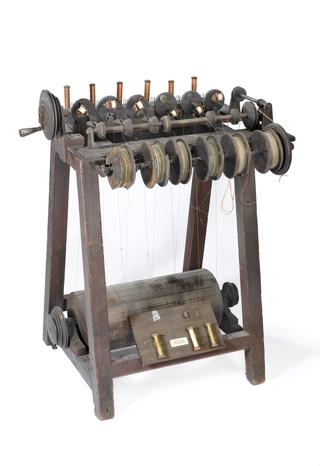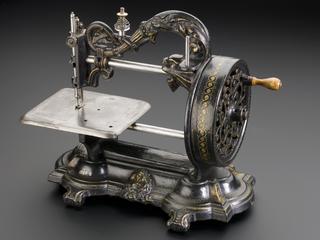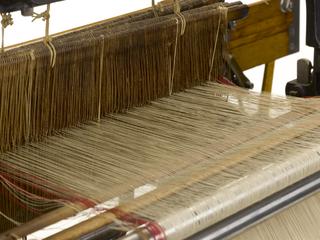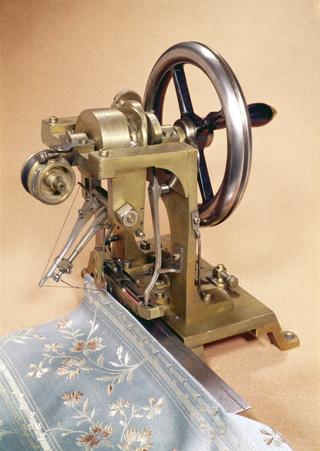
Automatic Circular Knitting Machine, 1923.
- Made:
- 1923 in England, Leicester and Leicestershire
Komet three-quarter hose circular rib knitting machine. Also with some tools, accessories, a catalogue of parts and some knitted samples.
This complex machine produces fabric in tubular form and is suitable for the manufacture of seamless hosiery. Manufactured by Scott & Williams in 1923, it uses the latch needle invented by Matthew Townsend in 1856, in which the hook is opened or closed by a hinged latch. To preserve continuity of production between each individual hose, the machine knits a short tubular length in alginate rayon and them commences the top of the new sock in standard material.
The needles are arranged vertically in a circle, as shown in the photograph of the knitting head of the machine, from which the cover has been removed. They are raised and lowered consecutively as the needle cylinder rotates, causing the butts or tails of the needles to follow a cam path on the body of the machine. This results in the knitting action.
Threads of different colour or elastic thread can be introduced automatically be lowering the appropriate thread carrier into the knitting zone. When a sock has been completed, a few courses of alginate yarn are knitted before starting the next sock, so that half hose can be produced in a long string without stopping the machine. The linking sections are subsequently dissolved out in hot water.
When shaping the heel, half the needles are put out of action automatically while the needle ring oscillates. A needle is taken out at each course and reintroduced after the turn and eventually circular knitting is resumed. The sock is completed except for a slit at the toe which has to be closed on a seaming machine.
Details
- Category:
- Textiles Machinery
- Object Number:
- 1969-381
- Measurements:
-
overall: 1800 x 600 x 900 mm
overall (box 2 of 3): 80 mm x 280 mm x 380 mm,
overall (with base): 1820 mm x 920 mm x 920 mm,
overall (box 3 of 3): 10 mm x 270 mm x 205 mm,
- credit:
- Klinger Manufacturing Co. Ltd.




